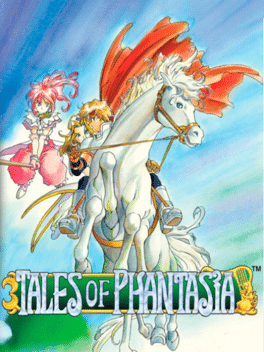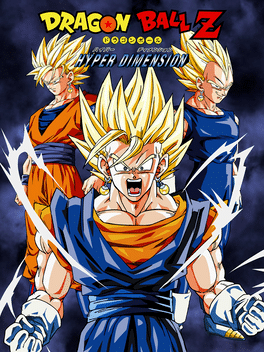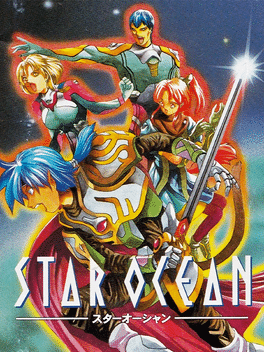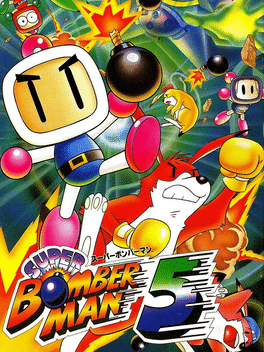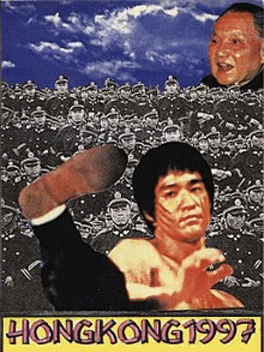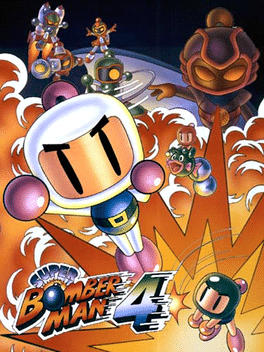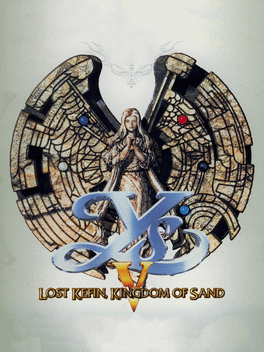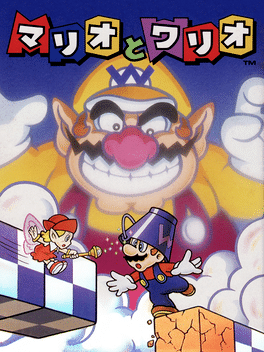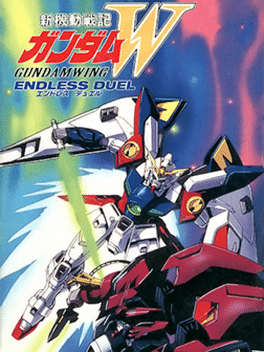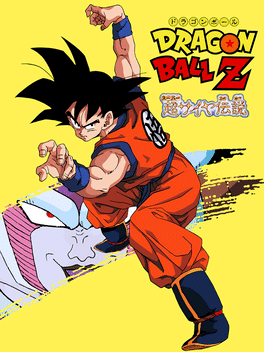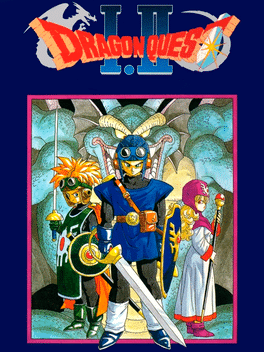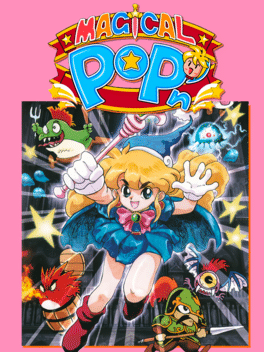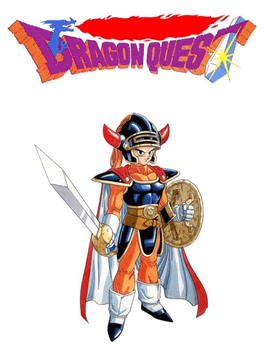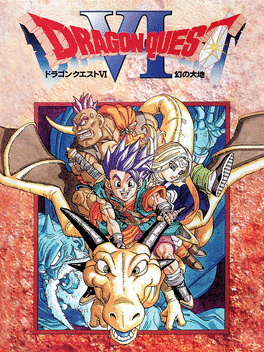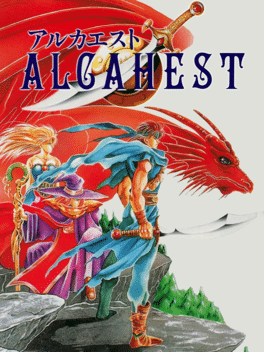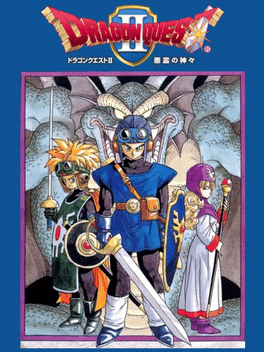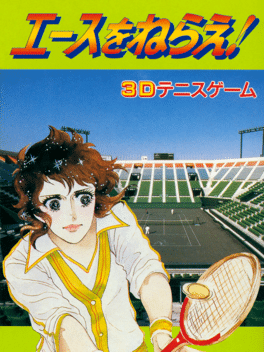Most Popular Super Famicom Games
-
Tales of Phantasia
1995
Tales of Phantasia
1995
star 7.4Tales of Phantasia is the first installment of the Tales series, and was released by Namco in 1995 for the Super Famicom. Released at the end of 1995, Tales of Phantasia is considered one of the crowning achievements for its time. It has graphics that push the console to its limits, an original never-before-seen battle system, and the addition of actual voices and voice actors. It is also the first and only Super Famicom game to feature an entirely original, vocalized theme song featured directly in the game. -
Dragon Ball Z: Hyper Dimension
1996
star 7.4Dragon Ball Z: Hyper Dimension is a 2D fighting game and the last DBZ game made for the Super Famicom (SNES). It is based around the most memorable battles from DBZ and introduces more traditional and fluid combat mechanics. -
Live A Live
1994
Live A Live
1994
star 8Live A Live's story is split across seven seemingly unrelated chapters that can be played in any order, based on popular genres such as Western, science fiction, and mecha. Each chapter has its own plot, setting, and characters. Although the basic gameplay is the same throughout the game, each chapter adds a new factor to the basic formula, such as the stealth elements in the ninja chapter. After the first seven chapters are completed, two final chapters take place to establish the connection between the seven previous and resolve the story. -
Star Ocean
1996
Star Ocean
1996
star 7.7The first game from tri-Ace released on the Super Famicon published by Enix. A huge scale role playing game with beautiful graphics and sound that were impossible on the regular Super Famicon, that includes skills, talents, special move system, item creation, private action and full motion active battles. -
Super Bomberman 5
1997
Super Bomberman 5
1997
star 9.3An evil Bomber named Emperor Terrorin who has the power of Time itself has freed various criminal Bombers from their prison cells in orbit around Planet Bomber. Setting them up in a warped time and space, Shirobon, Kurobon, and their Louie (Rui) companions must travel through stages and defeat them before going up against Emperor Terrorin himself. Super Bomberman 5, released by Hudson Soft in early 1997, was the final Bomberman game released on the Super Family Computer - the Japanese version of the SNES. The game was released in two variations: a standard cartridge and a gold cartridge, which was sold exclusively through CoroCoro Comic. The gold cartridge included extra maps in battle mode. -
Hong Kong 97
1995
Hong Kong 97
1995
star 1.1Hong Kong 97 is a 1995 multidirectional shooter video game made in Japan for the Super Famicom in disk drive format by HappySoft Ltd., a homebrew game company. The game was designed by the Japanese game journalist Kowloon Kurosawa (クーロン黒沢), who said the game was made in about a week. The game has gained a cult following in Japan and Taiwan for its notoriously poor quality — it has been ranked as a kusoge, which literally means "shitty game", a game considered "so bad that it's good". It has since been given multiple parody treatments. The game also achieved Number One "Wacky Japanese Game of All Time" in the XLEAGUE.TV video game TV show Wez and Larry's Top Tens and was featured in an episode of the Angry Video Game Nerd. -
Super Bomberman 4
1996
Super Bomberman 4
1996
star 8.1The fourth SNES game in Hudson's explosive multiplayer series sends White Bomber and Black Bomber hurtling through time. -
Ys V: Lost Kefin, Kingdom of Sand
1995
star 6.7Ys V: Kefin, The Lost City of Sand is the fifth game of the series. It was released for Snes in 1995. A remake was released for PS2 in 2006. Adol is travelling through new lands, in search of more adventure, when he hears of the vanished desert city of Kefin. He sets off to investigate this ancient city's disappearance. The RPG-style statistical elements and the overhead view of most of the previous games are retained in Ys V. As in Ys III, there is no auto-attack; the player must press a button to swing Adol's sword. Adol is also given the ability to jump and defend with his shield. A new magic system is introduced in Ys V as well, which requires the player to charge up spells by holding a button before they can be cast. -
Mario & Wario
1993
Mario & Wario
1993
star 5.8Mario & Wario is a puzzle game that is compatible with the SNES Mouse. The player chooses Princess Peach, Mario or Yoshi, and Wario proceeds to drop a bucket on their head (the object changes in later levels). The player controls Wanda the fairy to guide the now-blinded character through an obstacle course, to reach Luigi waiting at the end. -
Shin Kidou Senki Gundam Wing: Endless Duel
1996
star 7.9It is the year After Colony 195, and war between the Space Colonies and Earth has begun. To give the colonies an edge, they send 5 young soldiers, trained to perfection, to earth in the most powerful of Mobile Suits-Gundams. With their arrival, the tide of the war changes as they battle against the Earth forces and the Colonies of their origin. -
Dragon Ball Z: Super Saiya Densetsu
1992
star 6.9Dragon Ball Z: Super Saiya Densetsu is a role playing video game and the first Dragon Ball game for the Super Famicom. It was released only in Japan on January 25, 1992. Super Saiya Densetsu is a remake combining two earlier Famicom games of the Gokuden series: Dragon Ball Z: Kyōshū! Saiyan and Dragon Ball Z II: Gekishin Freeza, but without the movie characters and anime filler elements that were featured in them. -
Dragon Quest V: Tenkuu no Hanayome
1992
star 8.5Dragon Quest V: Tenkuu no Hanayome is a role-playing video game and the fifth installment in the Dragon Quest video game series, second of the Zenithian Trilogy. Originally developed by Chunsoft and published by Enix Corporation, Dragon Quest V was the first title in the series to be released for the Super Famicom video game console in Japan in September 1992. Dragon Quest V was the first game in the series to not be released outside Japan due to programming issues at the time. -
Dragon Quest I.II
1993
Dragon Quest I.II
1993
star 4.5Dragon Quest I.II is an enhanced remake of the first two Dragon Quest games. It has few modifications to gameplay, but the interface and graphics have been enhanced to be on a par with the 1992 Dragon Quest V, and the games have been rebalanced to make them slightly easier. -
Magical Pop'n
1995
Magical Pop'n
1995
star 6.4The game is a side-scroller which is divided into six stages. The player starts with a three-heart life gauge and one spell attack. The player can increase Princess's lives by collecting golden tokens (which look like the Princess's face), gaining one life for every three coins collected. The player can also increase health by finding heart containers in treasure chests. Spells can be obtained throughout the game and are important for advancing further. -
Dragon Quest
1993
Dragon Quest
1993
star 7.9Remake of Dragon Warrior released for the Super Famicom in the Dragon Quest I.II compilation. This remake includes updated graphics that retain the original look, sound of higher quality, and some changes in the gameplay and in the game world: certain locations are larger, some menu commands (such as "Stairs") are omitted, and there is a larger variety of items. -
Dragon Quest VI: Maboroshi no Daichi
1995
star 7.9Dragon Quest VI is the sixth installment in the Dragon Quest series. It is the penultimate title for the Nintendo Super Famicom as well as the last game in the Zenithia trilogy, and the first game in the series to be developed by Heartbeat, rather than Chunsoft. Like every other Dragon Quest game, the setting in Dragon Quest VI is very medieval, complete with castles, knights, and magic. The main world is divided into the Lower World and the Upper World, each with a separate but similar map. To get from one world to the other, the party uses special warps (such as in wells) or by ascending/descending colossal stairs on the world map. -
Alcahest
1993
Alcahest
1993
star 7.9Alcahest is an action role-playing game with a top-down perspective that plays similar to The Legend of Zelda. It is divided into 8 stages that are progressed by finding items that aid the protagonist Alen on his quest, and end with a boss battle. After specific boss fights, the player will gain the abilities of one of the four elemental Guardians. Alen will also find five allies that will join him at predetermined points of some levels. They are the young wizard Garstein, the princess Elikshil, the knight Sirius, the android Magna and the shape-shifter dragon goddess Nevis. Though they cannot be controlled directly, allies will attack and use special moves when the corresponding button is pressed. -
Dragon Quest II
1993
Dragon Quest II
1993
star 6.9Remake of Dragon Warrior II released for the Super Famicom in the Dragon Quest I.II compilation. This remake includes updated graphics that retain the original look, sound of higher quality, and some changes in the gameplay and in the game world: certain locations are larger, some menu commands (such as "Stairs") are omitted, and there is a larger variety of items. -
Dragon Quest III: Soshite Densetsu he...
1996
star 8.9Dragon Quest III: Soshite Densetsu he... is a remake of the third Dragon Quest for the Super Famicom. -
Ace wo Nerae!
1993
Ace wo Nerae!
1993
star 5.2A tennis game for the Super Famicom based on the 1970s manga and anime of the same name.
